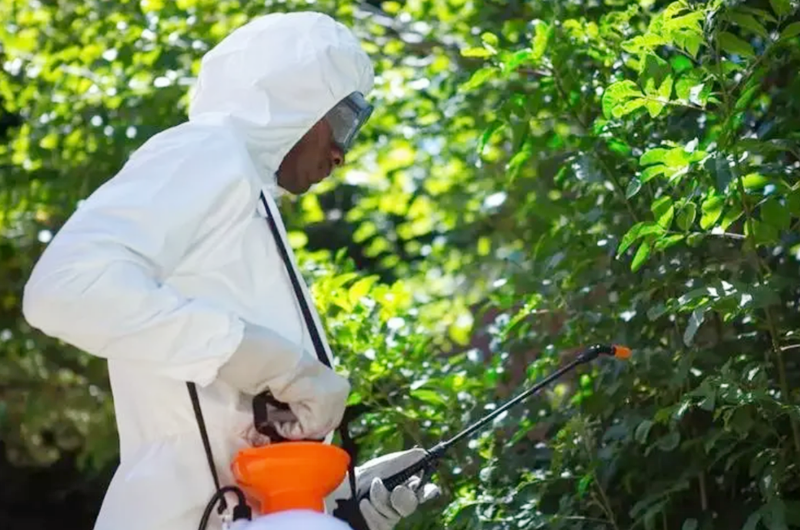Which Natural Ingredients Can be Used For Biological Pesticides?
Botanical pesticide refer to preparations made from all or part of the organic substances of plants and their secondary metabolites, including active ingredients extracted from plants, the plants themselves and compounds and derivatives synthesized according to active structures. A large number or even excessive use of chemical pesticides has caused serious pollution to the environment, and at the same time, with the transmission of the food chain, it will eventually cause harm to human health, so safe and pollution-free, environmentally friendly plant source pesticides have attracted more and more attention.
Several herbs and plant ingredients can be used to create biological pesticides. These natural compounds can be effective in controlling pests and insects while being less harmful to the environment and non-target organisms. Here are a few examples of herb ingredients commonly used in biological pesticides and how they work:
Azadirachtin
Neem (Azadirachta indica): Neem oil is derived from the neem tree’s seeds. It contains azadirachtin, which disrupts insect growth and development by interfering with molting and feeding. It also has antifeedant properties, meaning it makes plants less palatable to pests. Neem oil affects a wide range of insects, including aphids, caterpillars, and beetles.
Matrine
One of the sources of matrine, Sophora flavescens, a variety of the genus sophora in the leguminous family, distributed in Russia, Japan, India, Korea and China. The roots, stems, and fruits of this plant by ethanol and other organic solvents extract an alkaloid, namely matrine, which belongs to quinolizidine derivatives of lupine alkaloids, with specific, natural characteristics, in nature can be rapidly decomposed, the final product is carbon dioxide and water, can be used as a green, environmentally friendly insecticide. Matrine has strong inhibitory activity against wheat Scab, cucumber powdery fungus, wheat powdery fungus, tomato leaf fungus and apple anthrax, and can inhibit the common plant pathogens such as downy mildew of Chinese cabbage, wheat gibberella, grain wilt, powdery fungus and Fusarium graminis.
Pyrethrin
Pyrethrum (Chrysanthemum cinerariifolium) flowers contain natural pyrethrins, which attack the nervous systems of insects. Pyrethrins are commonly used to control flies, mosquitoes, and other flying insects. They have a low toxicity to humans and mammals, making them a popular choice for natural pest control.
Chrysanthemum (Chrysanthemum spp.) also contain pyrethrins, similar to pyrethrum flowers. These compounds target the nervous systems of insects, leading to paralysis and death. Chrysanthemum-based pesticides are effective against a variety of insects and mites.
Allicin
Garlic (Allium sativum) contains sulfur compounds that repel and deter pests. When garlic extracts or garlic oil are used, they create an odor that insects find unappealing. This can help protect plants from pests like aphids, caterpillars, and even larger animals like rabbits and deer.
Rosmarinic acid
Rosemary (Rosmarinus officinalis) contains compounds like rosmarinic acid and essential oils that have insect-repelling properties. Rosemary oil can be used to deter pests and control their populations.
Tea saponin
Tea saponin can be used as a biological pesticide. Saponins are naturally occurring compounds found in various plant species, including tea plants (Camellia sinensis). They have been studied for their potential as environmentally friendly alternatives to chemical pesticides. Tea saponin works as a natural insecticide through its deterrence and toxic effects on pests.
There are other herbs that can be used as biological pesticides because of their properties of low toxicity, no residue and little pollution to the environment, which including Marigold and mint. Marigolds contain natural compounds that have pesticidal properties. They can deter nematodes (microscopic worms that attack plant roots) and some flying insects. Marigold extracts or companion planting with marigolds can help protect crops. Mint plants contain essential oils that can be used as natural insecticides. These oils can deter pests and disrupt their feeding habits. Peppermint oil, for example, has been used to repel ants and spiders.
These natural ingredients work by various mechanisms, such as disrupting insect feeding and molting, affecting their nervous systems, repelling them with strong odors, or physically damaging their exoskeletons. It’s important to note that while these natural pesticides are generally safer for the environment and non-target organisms, they can still have some impact on beneficial insects and should be used with care. Always follow recommended application instructions and consider integrated pest management strategies for effective and sustainable pest control.



